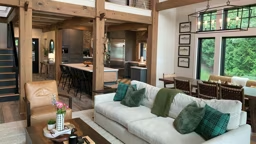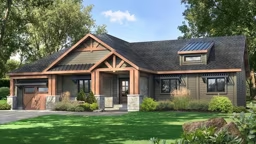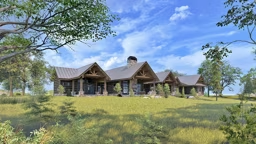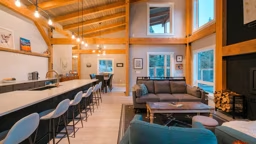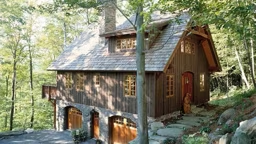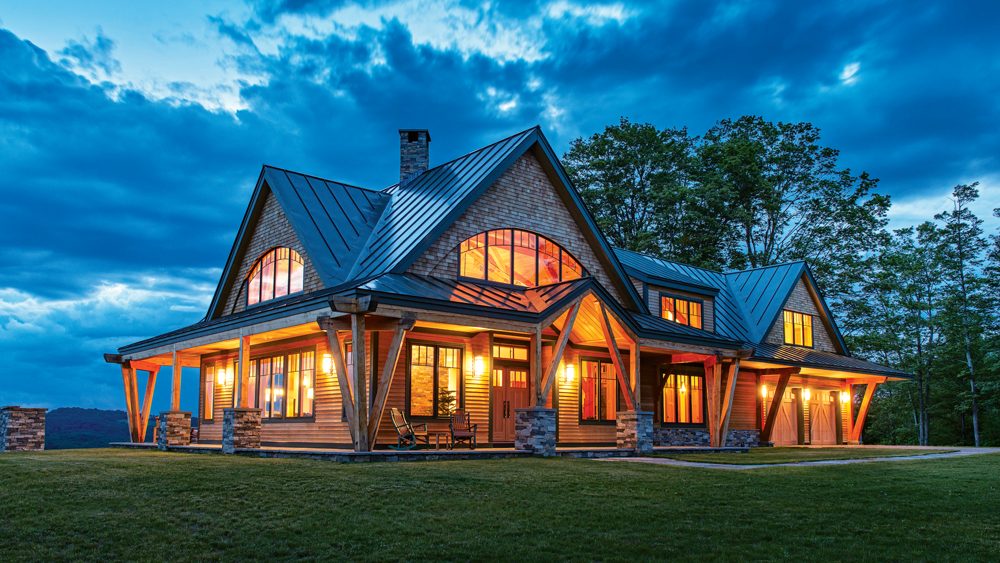
If you’ve been dreaming of a timber home of your own, no doubt you’ve researched floor plans and architectural designs in magazines (like this one) and online, and you’re smart to do that. It’s vital to have a clear vision of the kind of house you’re looking for, and these resources provide the springboard for you to articulate what you like — and what you don’t.
During this dreaming-and-investigation process, it’s probably very tempting to opt for a stock floor plan from the throngs of existing plans that are out there. After all, the designs have already been engineered, and it’s easy to visualize how you could live in the layout. However, stock plans are very rarely built to the exact specifications of the original design, and alterations will cost you both time and money. So before you set your sights on the stock-plan route too firmly, you may want to explore the benefits of drafting a timber home tailored specifically for you and your family.
Why Custom?
The major advantage to going with a custom design as opposed to a stock plan is that you have the chance to create spaces that are appropriate for your lifestyle.
“One of the things I do is make an effort to understand how each of the people who will reside in the home will live in its spaces,” says Diana Allen, director of design at Mansfield, Pennsylvania-based Woodhouse, The Timber Frame Company. “I like to find out what drives them, and then determine how I can make the space work for all the occupants on multiple levels.”
According to Diana, one of the biggest areas of contention in a home isn’t one of the more structurally complex rooms, like the kitchen or the great room — it’s the master bedroom. “You have two distinct individuals who are sharing a life in a very intimate space, but they’ll have different habits and patterns,” she explains. “For instance, one person almost always gets up earlier than the other. You don’t want the early-bird clicking on the light and disturbing the other while he/she is still sleeping. A custom approach allows an architect to understand the full scope of how you live, to take these kinds of nuances into account and then find solutions for them.”
Sure, some of these issues can be resolved by tweaking a pre-existing design. But even if you start with a stock plan with intentions to modify it, there are only so many changes you can make to it, either in terms of the structure itself or before any cost-savings you hope to achieve by choosing a ready-made plan are negated with excessive change orders.
“The opportunity afforded by working on a custom design with an architect like me is that we get to know you personally,” Diana explains. “Here at Woodhouse, we conduct in-depth interviews with our clients so we really understand them as people before any lines are drawn or spaces are sketched. Once the design process begins, we look at every single room, every post and beam, every brace, every window — even each piece of trim — and evaluate how it interacts with the structure and the client’s lifestyle. Then we ask: ‘Is this feature important? Does it enhance or detract from the client’s ultimate goals?’ The result is a home that is truly about you and your needs. That’s the kind of flexibility a stock plan just can’t give.”
A custom timber home can take other considerations in mind, as well. For example, you can plan for potential expansion or contraction, as the case may be. You can take measures that will allow the home to work for you as you age in place. You can lay the groundwork now for a future secondary, self-sustaining living space for an elderly parent or one that you can rent out for supplemental income, if needed. A good custom-home designer will help you consider elements you didn’t even realize you needed, as well as help identify those you don’t.
Site Considerations
One of the most compelling arguments for a custom timber home design is the ability to tailor the footprint to your property. Your designer will take into account the slope of the lot, the potential to maximize views and the ability to capture passive-solar energy in the way the house is oriented on the land. Factors like these are difficult to address or remedy with a pre-designed stock plan.
“You can tell when a house isn’t designed for the site,” according to architect Ty Allen with New Energy Works, which has offices in New York and Oregon. “The land teaches us what to design."
Is Custom Worth the Cost?
It’s comes as no surprise that choosing to create a design from scratch may cost more than opting for a stock plan. But a well-thought-out custom design actually may be less expensive in the long run, according to Ty.
“We’ve always believed that good design can save you money in the end,” he says. “The reality is people spend a lot of time Band-Aiding stock plans to make them work with their site and the way they live their lives.”
In fact, buyers who opt for custom homes may be able to get exactly what they need in less square footage, which is usually the key factor when determining total building costs.
If you choose to draft a custom timber home plan, Ty says you’re not purchasing a “product,” and your not just buying a finished set of drawings. “What you’re buying is a process,” he explains. “It’s a process of your timber home company understanding your site and how you’re going to use the home; then it’s the process of the designer drawing information out of you so he or she knows how to create a home that’s specific to your lifestyle.”
In short, your home should be an extension of you, and nothing will capture that as well as a custom plan.
Scott Gibson contributed to this article.





